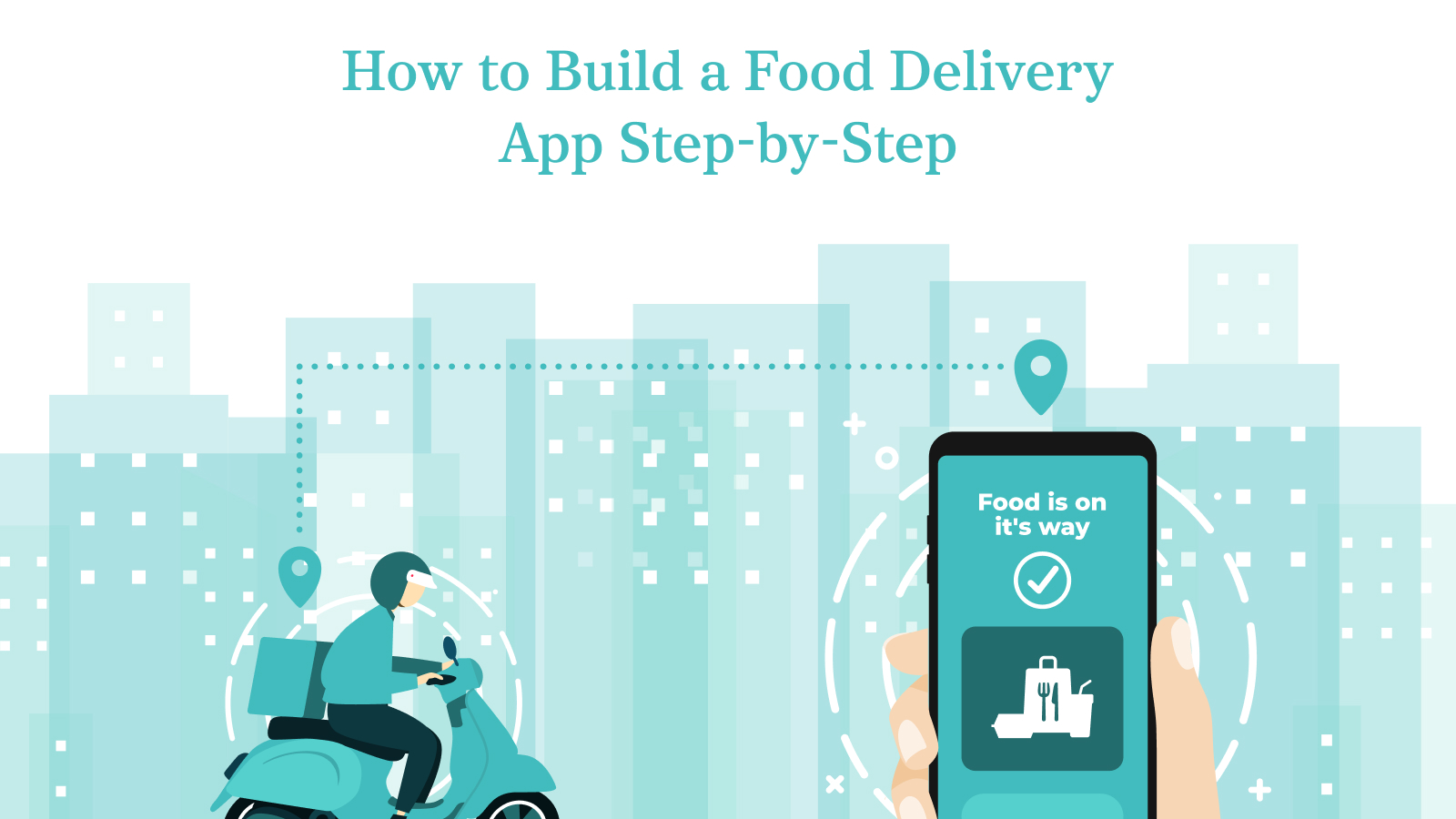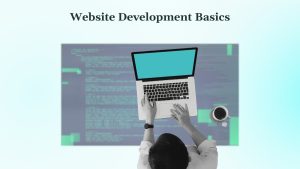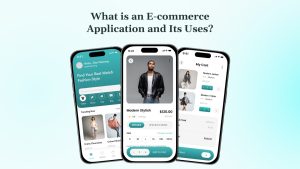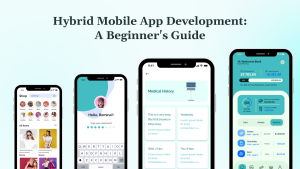The food delivery app market continues to thrive in 2025, fueled by growing consumer demand for convenience and digital ordering solutions. Global online food delivery revenue is projected to reach USD 1.39 trillion in 2025, reflecting the industry’s rapid expansion. Consumers increasingly rely on apps for convenient meal ordering, driving demand for platforms that connect customers, restaurants, and delivery personnel seamlessly. Building a food delivery app positions you to capitalize on this trend, offering a solution that enhances user experiences and streamlines operations in a competitive industry.
You’ll discover how to design a robust app that connects stakeholders and drives success in the competitive food delivery industry. Let’s begin by exploring the ecosystem of a food delivery app.
Key Takeaways
- Food delivery apps streamline ordering, delivery, and restaurant operations in a growing market.
- Include features like real-time tracking, in-app payments, and menu management for all users.
- Use React Native, Node.js, and PostgreSQL for scalable, cross-platform development.
- Address challenges like tracking accuracy and payment security with robust testing and APIs.
- Expect MVP costs of $25,000-$50,000 and full platforms at $80,000-$150,000+.
Understanding the Food Delivery App Ecosystem
To build an effective food delivery app, you need to understand its ecosystem, which involves multiple stakeholders and interconnected components working together seamlessly. The app serves as a platform connecting customers, restaurants, delivery personnel, and administrators, each with distinct needs and roles. A well-designed ecosystem ensures smooth interactions, efficient operations, and a positive user experience, setting the foundation for your app’s success.
Stakeholders Involved
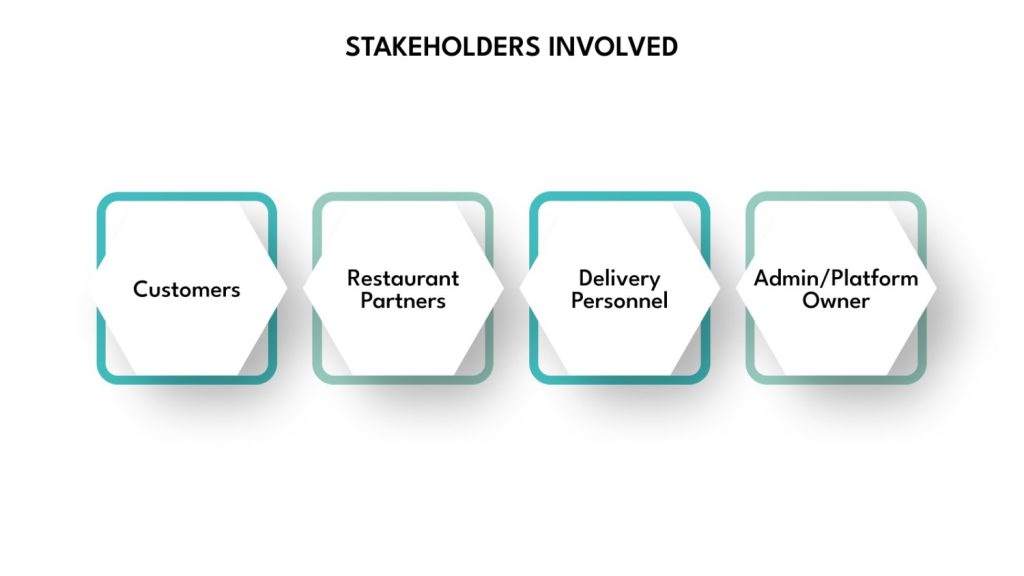
- Customers: Order food, track deliveries, and make payments, expecting convenience and transparency.
- Restaurant Partners: Manage menus, process orders, and coordinate deliveries, seeking operational efficiency.
- Delivery Personnel: Handle order pickups and deliveries, requiring clear navigation and earnings tracking.
- Admin / Platform Owner: Oversee operations, manage users, and analyze performance to ensure profitability.
App Architecture Overview
Your app’s architecture must support multiple interfaces tailored to each stakeholder. The customer app enables browsing, ordering, and tracking. The delivery rider app provides job assignments and navigation tools. The restaurant app or dashboard manages menus and orders. The admin panel oversees user management, analytics, and dispute resolution, ensuring centralized control.
With the ecosystem defined, let’s explore the essential features your food delivery app should include.
Must-Have Features of a Food Delivery App
A successful food delivery app requires a comprehensive set of features tailored to customers, delivery partners, restaurants, and administrators. These features ensure usability, efficiency, and satisfaction across all user roles, making your app competitive in 2025’s food delivery market.
For Customers
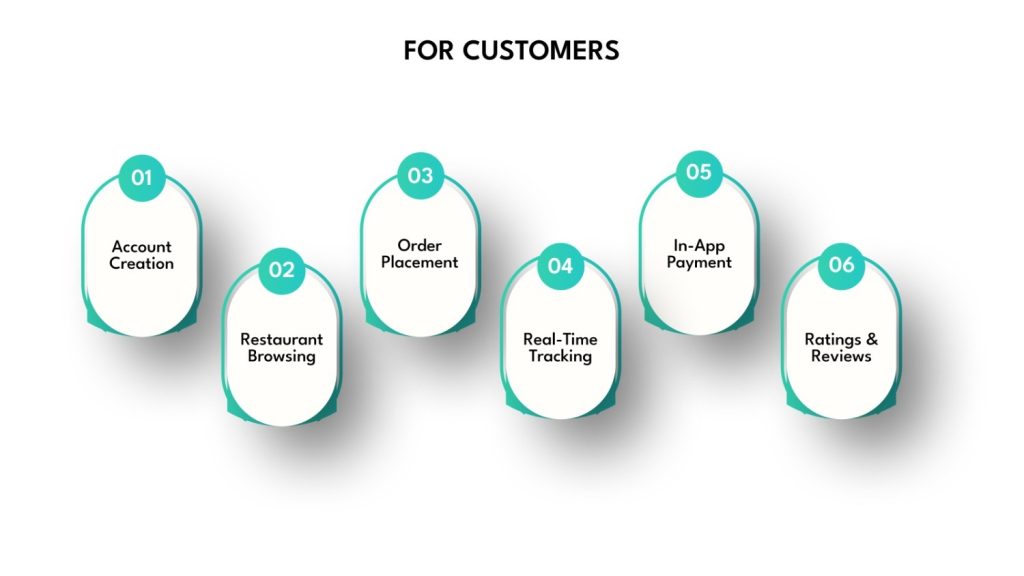
- Account Creation: Enable sign-up with email, phone, or social logins for quick onboarding.
- Restaurant Browsing: Display restaurants with filters for cuisine, ratings, or delivery time.
- Order Placement: Allow users to customize orders, add items, and specify delivery instructions.
- Real-Time Tracking: Provide live GPS tracking of deliveries for transparency.
- In-App Payment: Support secure payments via cards, wallets, or UPI with gateways like Stripe.
- Ratings & Reviews: Let users rate restaurants and drivers, fostering trust and quality.
For Delivery Partners
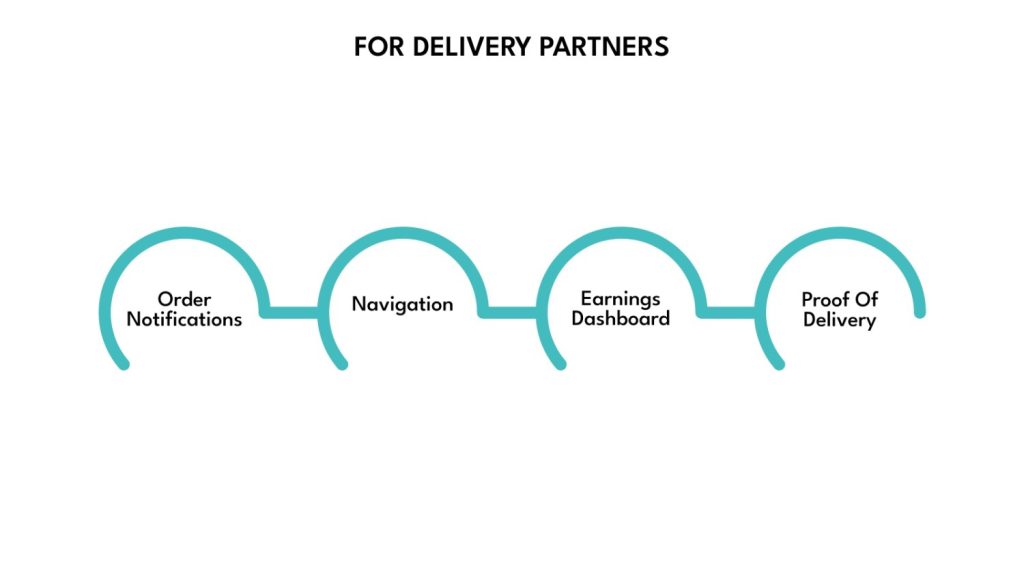
- Order Notifications: Send real-time alerts for new delivery assignments with order details.
- Navigation: Integrate Google Maps for optimized routes and turn-by-turn directions.
- Earnings Dashboard: Display earnings, trip history, and incentives for transparency.
- Proof of Delivery: Enable photo uploads or digital signatures to confirm deliveries.
For Restaurants
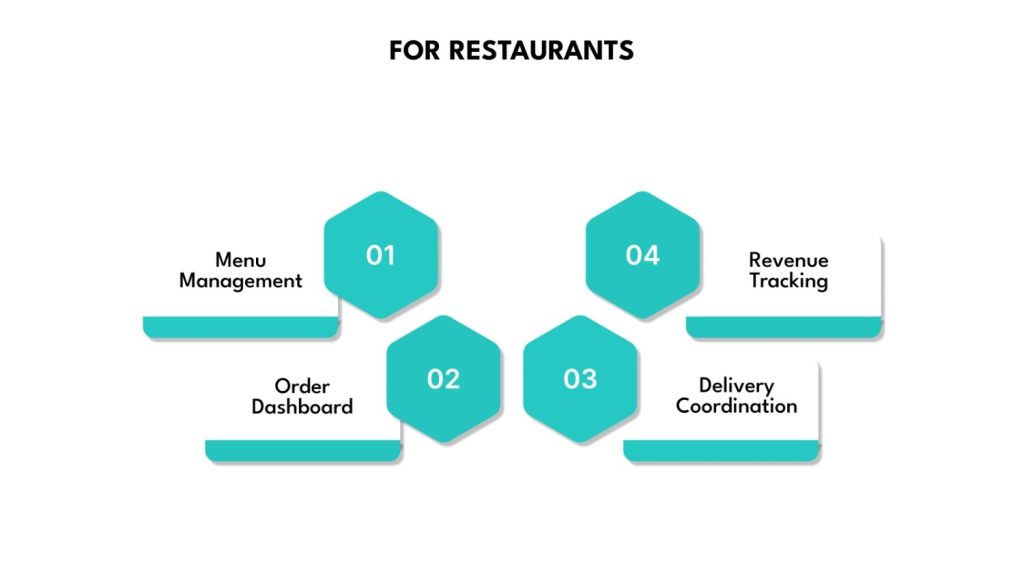
- Menu Management: Allow restaurants to update menus, prices, and availability in real time.
- Order Dashboard: Provide a centralized view of incoming orders with status updates.
- Delivery Coordination: Facilitate communication with drivers for pickup scheduling.
- Revenue Tracking: Offer reports on sales, commissions, and customer trends.
For Admins
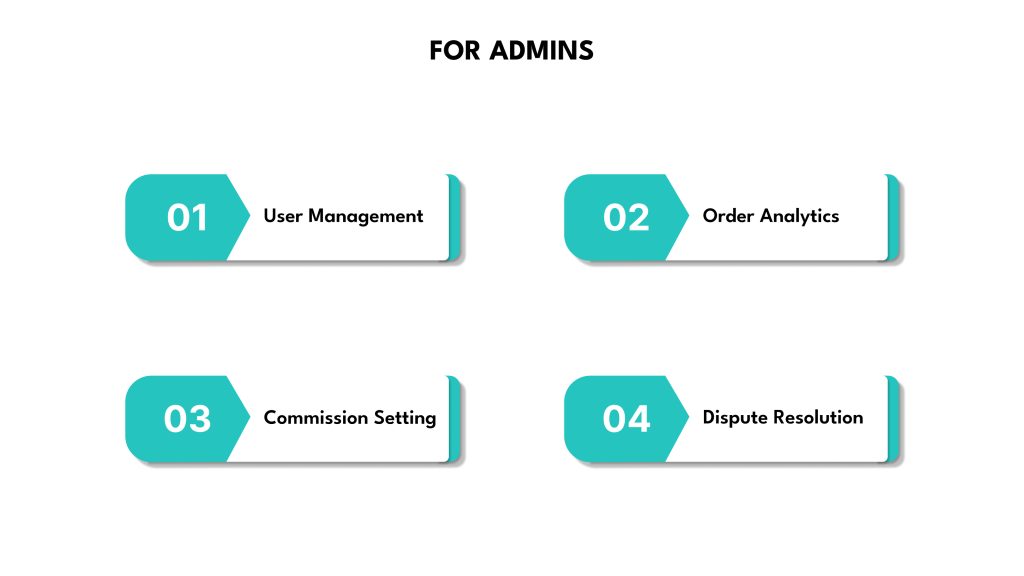
- User Management: Oversee customer, restaurant, and driver accounts, including verification.
- Order Analytics: Track order volumes, delivery times, and revenue for optimization.
- Commission Settings: Configure commission rates for restaurants or subscription plans.
- Dispute Resolution: Manage customer complaints or refund requests efficiently.
With your app’s features outlined, let’s examine the business models available for your food delivery platform.
Choosing the Right Business Model
Selecting the appropriate business model is critical to your app’s success, as it determines how you generate revenue and manage operations. You can choose between an aggregator model, which connects restaurants and customers without managing logistics, or a full-stack model, which includes delivery and restaurant operations. Each model offers distinct revenue streams to ensure profitability.
- Aggregator Model vs. Full-Stack Model: Aggregator apps like Uber Eats focus on connecting users with restaurants, earning commissions, while full-stack apps like DoorDash manage logistics and deliveries, offering greater control but requiring higher investment.
- Revenue Streams:
- Delivery Charges: Charge customers per order, typically $2-$5, for delivery services.
- Commission: Earn 15-30% per order from restaurants for platform usage.
- Subscription Plans: Offer premium memberships like Zomato Gold for free deliveries or discounts.
- Advertising: Promote restaurants or products within the app for additional revenue.
With your business model chosen, let’s explore the technology stack needed to build your app.
Technology Stack for a Food Delivery App
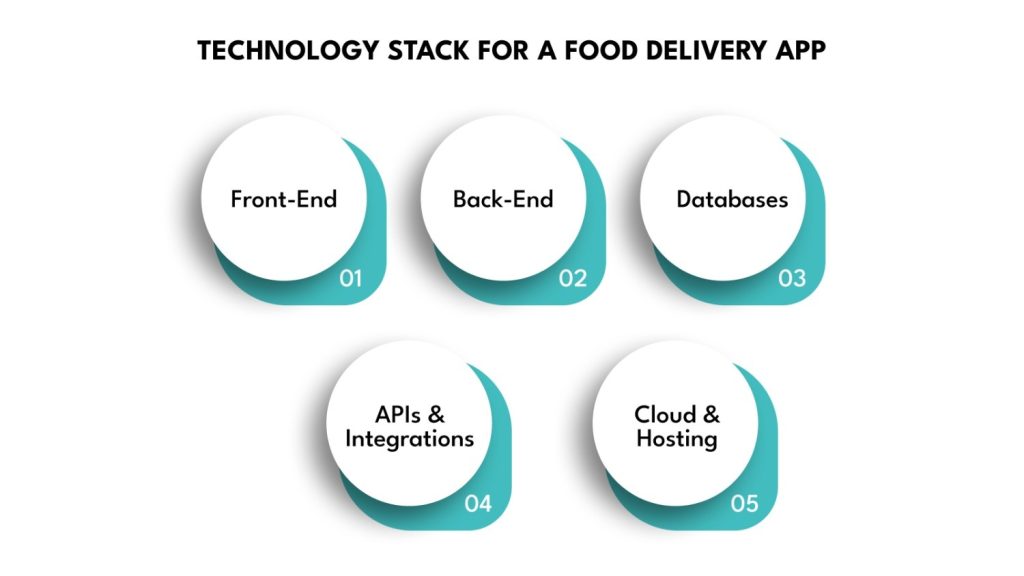
The right technology stack ensures your food delivery app is scalable, secure, and user-friendly. You need tools that support real-time tracking, seamless payments, and robust performance to meet 2025’s market demands.
Front-End
- React Native, Flutter: Develop cross-platform mobile apps for iOS and Android, ensuring consistent user experiences with reduced development time.
- React.js, Angular: Build responsive admin dashboards for real-time order and user management, offering clear data visualization.
Back-End
- Node.js: Provides fast, scalable server-side logic for real-time order processing and notifications.
- Django: Offers secure, rapid development with built-in database support for complex workflows.
- Laravel: Ensures reliable backend frameworks for managing large-scale restaurant and delivery operations.
Databases
- PostgreSQL: Handles structured data like order details and user profiles, ensuring reliability.
- MongoDB: Manages unstructured data like customer reviews or delivery logs, offering flexibility.
- Firebase: Supports real-time data sync for tracking and notifications, ideal for mobile apps.
APIs & Integrations
- Google Maps API: Enables route optimization and real-time delivery tracking for drivers and customers.
- Stripe/Razorpay: Facilitates secure payment processing with support for multiple methods.
- Twilio, SendGrid: Powers in-app messaging and email notifications for order updates.
- Delivery Tracking APIs: Integrates with logistics providers for accurate shipment monitoring.
Cloud & Hosting
- AWS, Azure: Provide secure, scalable hosting with compliance for sensitive user data.
- Firebase: Offers real-time database and analytics for mobile-first apps.
Build a powerful food delivery app with DEVtrust’s expert mobile app development services. Our team delivers seamless, user-friendly solutions using React Native, Flutter, and Swift to create cross-platform apps that engage customers and drive growth. Contact DEVtrust today to transform your vision into reality.
With your technology stack selected, let’s outline the step-by-step process for developing your food delivery app.
Step-by-Step Development Process
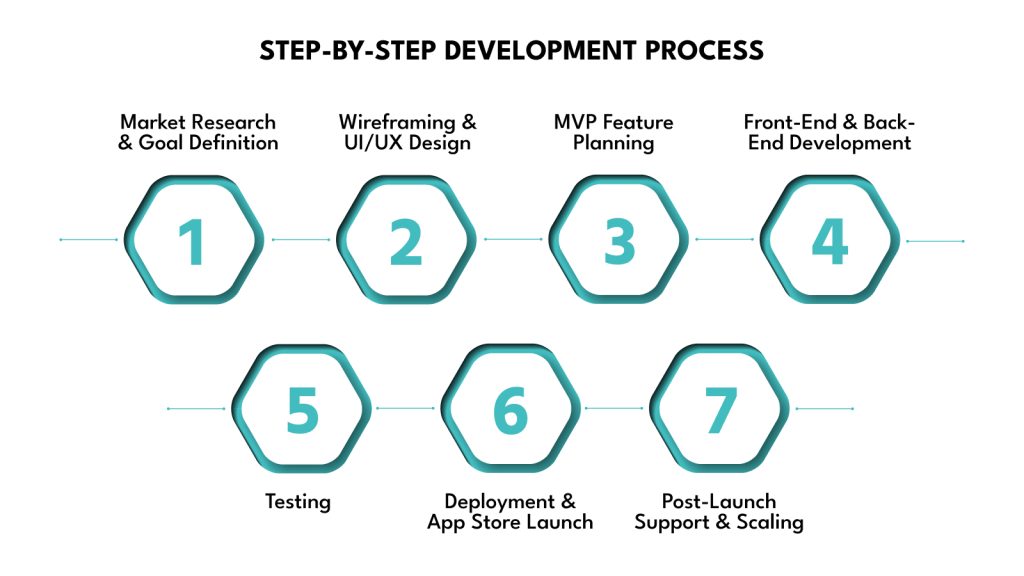
Building a food delivery app requires a structured approach to ensure functionality, scalability, and user satisfaction. Each step, from research to post-launch support, is critical to delivering a robust solution.
Step 1: Market Research and Goal Definition
Analyze competitors like DoorDash or Swiggy to identify gaps in features or user experience. Define user needs, such as fast delivery or menu variety, and create a prioritized feature list. Develop a project roadmap with timelines, milestones, and budget estimates to align your team and stakeholders.
Step 2: Wireframing and UI/UX Design
Create flow diagrams using tools like Figma to map user journeys for customers, drivers, and restaurants. Design intuitive interfaces with clear navigation, ensuring mobile responsiveness and accessibility features like high-contrast visuals. Test designs with potential users to refine usability and build trust.
Step 3: MVP Feature Planning
Prioritize essential features like order placement, real-time tracking, and payment processing for your minimum viable product (MVP). Focus on core functionalities to launch quickly, gathering user feedback to inform future iterations while keeping development costs manageable.
Step 4: Front-End and Back-End Development
Build customer, driver, and restaurant interfaces using React Native or Flutter for responsiveness. Develop backend logic with Node.js or Django to handle order processing and user management. Integrate APIs like Google Maps and Stripe for tracking and payments, ensuring secure data handling.
Step 5: Testing
Conduct unit testing for features like order placement, integration testing for API connectivity, and usability testing for user flows. Perform performance testing to handle high-order volumes and simulate real-world scenarios, such as delivery delays, to ensure reliability.
Step 6: Deployment and App Store Launch
Publish your app on the App Store and Google Play, ensuring compliance with platform guidelines. Configure secure hosting on AWS or Azure and implement SSL/TLS encryption for data protection. Set up analytics tools like Firebase to monitor performance and user engagement.
Step 7: Post-Launch Support and Scaling
Monitor app performance using crash analytics and gather user feedback through reviews or surveys. Roll out updates to fix bugs, improve features like tracking accuracy, or add new functionalities. Plan for scalability to handle growing user bases and order volumes.
With the development process clear, let’s address common challenges and solutions for your food delivery app.
Estimated Cost of Developing a Food Delivery App
Understanding the costs of developing a food delivery app helps you budget effectively. Costs vary based on app complexity, platforms, and features, with ongoing expenses for maintenance.
- MVP Estimate: $25,000-$50,000 for core features like order placement and tracking, suitable for startups or local markets.
- Full-Featured Platform: $80,000-$150,000+ for advanced features like analytics dashboards or multi-language support, ideal for larger operations.
- Cost Factors: Number of platforms (iOS, Android, web), real-time tracking complexity, payment gateway integrations, and design intricacy.
- Ongoing Costs: Server hosting, updates, and support cost 15-20% of initial development annually.
With costs outlined, let’s explore challenges you may face and how to overcome them.
Common Challenges and How to Overcome Them

Developing a food delivery app involves navigating technical and operational hurdles that can impact its success. Addressing these challenges ensures a reliable, user-friendly platform.
- Real-Time Order Tracking Accuracy: GPS signal issues can disrupt tracking. Use robust APIs like Google Maps and offline caching to maintain accuracy in low-signal areas.
- Scalability for High User Volume: Peak order times can strain servers. Implement cloud solutions like AWS with load balancers to handle thousands of concurrent users.
- Payment Security and Fraud Prevention: Fraudulent transactions pose risks. Use PCI-DSS-compliant gateways and tokenization to secure payments and detect fraud in real time.
- Delivery Logistics Coordination: Coordinating drivers and restaurants is complex. Integrate automated dispatch systems and clear communication channels to streamline operations.
- User Retention and Engagement: Users may abandon apps with poor experiences. Offer loyalty programs, fast load times, and personalized notifications to keep users engaged.
With challenges addressed, let’s share tips for ensuring your food delivery app succeeds.
Tips for a Successful Food Delivery App
A successful food delivery app requires careful planning and execution to meet user expectations and business goals. These tips help you create a competitive platform.
- Start with a Niche or Specific Location: Launch your app in a targeted area or with a specific cuisine, such as vegan or local street food, to build a loyal user base. Focusing on a smaller market reduces competition and allows you to test features before scaling to broader regions, saving costs and refining your offering based on early feedback.
- Prioritize User Experience and Speed: Design intuitive interfaces with minimal clicks for ordering and tracking, ensuring fast load times (under 2 seconds) to prevent user drop-off. Use clear visuals and streamlined navigation, tested with real users, to create a seamless experience that keeps customers returning.
- Partner with Quality Restaurants and Delivery Staff: Collaborate with reputable restaurants known for consistent quality and reliable delivery personnel to ensure high service standards. Offer onboarding support and incentives, like signup bonuses, to attract top partners, building trust and enhancing your app’s reputation.
- Use Analytics to Optimize Operations: Implement tools like Firebase or Mixpanel to track metrics such as delivery times, order volumes, and customer retention rates. Analyze data to identify bottlenecks, like slow restaurant response times, and optimize processes to improve efficiency and profitability.
- Incorporate Personalization Features: Offer tailored recommendations based on user order history or preferences, such as suggesting favorite cuisines or promotions. Personalization increases engagement by up to 20%, fostering loyalty and encouraging repeat orders through targeted notifications.
- Ensure Robust Customer Support: Provide 24/7 in-app chat or ticketing systems to resolve issues like order delays or refunds quickly. Train support staff to handle disputes empathetically, ensuring positive customer experiences and reducing negative reviews.
- Focus on Scalable Infrastructure: Build your app with modular architecture and cloud hosting like AWS to handle growing user bases and peak order volumes, such as during holidays. This prevents crashes and ensures smooth performance as your app scales.
With these tips to guide your project, let’s wrap up your food delivery app development journey.
Conclusion
Building a food delivery app in 2025 involves creating a seamless platform that connects customers, restaurants, and drivers. DEVtrust excels in developing custom food delivery apps tailored to your business goals, using technologies like React Native, Node.js, and PostgreSQL to deliver secure, scalable solutions.
Our team integrates advanced features, such as real-time tracking and AI-driven recommendations, ensuring compliance with data privacy laws and industry standards. Partner with DEVtrust to create a food delivery app that drives customer satisfaction and business growth. Contact our experts today to discuss your project, and we’ll build a tailored solution that transforms the food delivery experience and positions your brand for success in 2025.
How to Build a Food Delivery App Step-by-Step
Kickstart food delivery app development with market research and a unique value proposition. Choose a sustainable business model and focus on essential features. Launch and promote your app effectively. Start your development journey today!
Contact Us